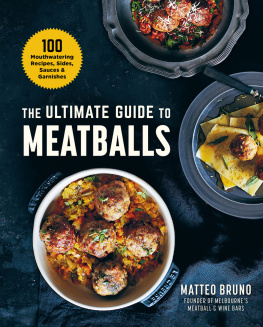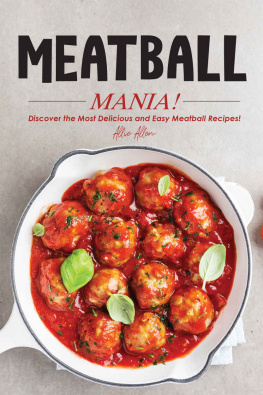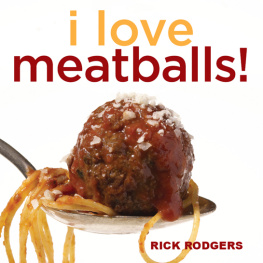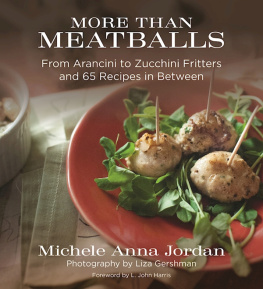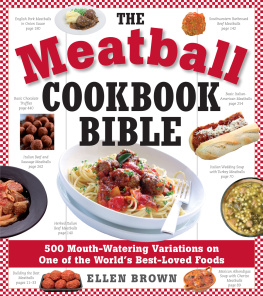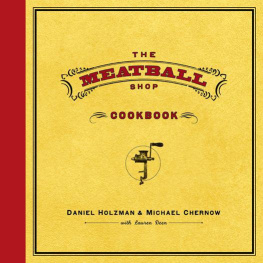Coming from a long line of cattle farmers both in Italy and I have always recognised the importance of knowing where your food comes from. It was ingrained in me from birth. I am the youngest of four brothers, and dinner was always a massive undertaking for my mother, who would regularly prepare large sections of meat from the cattle my father would produce out on the farm. I remember going to the Perth Royal Show as a young child and seeing a prized steer win the blue ribbon. My father would always buy the prize winner for the family and wed soon be enjoying enormous T-bone steaks for dinner. I suppose it was at the family kitchen table where my passion for food really began.
My profession as a film and television producer has given me the opportunity to explore topics of interest to me, and it's no surprise that in recent times all my work has been skewed towards producing food television. Ive had the pleasure of filming with Australias most celebrated chefs, and Ive seen the passion and dedication required to make it to the top. It was through the process of filming food programs that I was inspired to do something of my own to open a restaurant in Melbourne, a city widely recognised as having one of the best and most diverse ranges of cuisine in the world. But what would this restaurant be? It needed to be comfortable, affordable and incredibly tasty. It had to have meat. It had to be meatballs! And, so, the first of my group of restaurants was born.
It was Australias first meatball restaurant The Meatball & Wine Bar in the dining precinct of Flinders Lane in Melbournes CBD. At the restaurant, I started experimenting with different types of proteins and aromatics to produce distinctive flavour and texture combinations. I worked closely with my butcher to determine which cuts of meat would produce the best result. It was more complicated than you would think: each protein reacts differently during the cooking process. In the restaurant game, a lot rides on consistency of product, so I had to test and re-test all my recipes so I could confidently produce the same result each and every time. I learned about the importance of keeping your minced (ground) meat nice and cool; cooking with a combination of heat and humidity; the appeal of fresh herbs and aromatics; the importance of texture across a spectrum of different meatballs; but, most importantly, I learned about what people liked and why.
This book features some of the recipes used in my three restaurants, which currently serve around 10,000 happy diners each week. I hope you will find joy in making these meatballs, and that the recipes you take from this book and develop into your own will stay with you and your family for generations to come. Matteo Bruno
Soft hands There are no better tools than your own hands to mix and roll meatballs. Use your fingers to combine and fold the meatball ingredients, and use your cupped hands to gently form the round meatballs. Not overworking the meat and keeping the pressure as light as possible will ensure your balls dont become rubbery or tough. And always clean and dry your hands thoroughly before working with them.
Cold fridge Keeping it cool is what making meatballs is all about. Your minced (ground) meat should be as cold as possible at all times. Most domestic fridges sit between 3C (37F) and 5C (41F), which is fine, but if you can cool your meat to 12C (33.835.6F) before mincing, you will not only get a better textured meatball, but the lifespan of your meat will be extended. Boning knife A good boning knife can be used to break down joints of meat into the required cuts, or can be used as a finishing tool to trim the excess fat or connective tissue off a selected cut. Boning knives have a flexible blade, which can bend and follow the contours of bones, allowing you to remove the meat effectively. Meat grinder It is fairly common these days for most domestic food processors to have meat mincing attachments and they work perfectly well in most applications, but for the more serious meatball aficionado, a dedicated meat mincer is required.
They come in various sizes to suit all needs and are described in detail in the section. Mixing bowl A wide, deep mixing bowl is a vital tool you need to prepare the perfect meatball. Use glass or metal bowls, if possible. Note that glass retains the temperature of ingredients a little better than metal.
Ice-cream scoop Use an ice-cream scoop to ball up minced meat into consistent portions, about 50 g (1 oz) each. Digital scales Good-quality digital scales will allow you to measure individual portions of meatballs right down to the gram.
You dont always have to be precise after all, making meatballs is about having fun but for those who want to be exact with their portions, digital scales are the way to go. Digital thermometer A digital thermometer is a must-have especially if youre making large batches of meatballs that you may reheat down the track. As a guide, try to bring the centre of your meatballs up to 74C (165F); this temperature is hot enough to kill any potentially harmful bacteria. Avoid going much higher than this to ensure you dont dry out your meatballs. Frying pan A frying pan with a nice heavy base is ideal so there are no hot spots to burn your meatballs. Try to find a pan suitable for the oven as well, as many recipes start on the stovetop and finish in the oven.
Baking trays A nice, high-sided baking tray is ideal for baking meatballs, and if you can find one thats non-stick on the base and sides, youre already ahead of the game. A bakers tray with indents is also perfect for baking meatballs. The divots are rounded, which hold the shape of your meatballs. You can turn the ball halfway through the cooking process to expose each side to the bakers tray so a nice crust can form. Oven In a perfect world wed all have combination ovens that cook with convection heat and controlled humidity. If you dont have one, add an ovenproof saucer of water inside your regular oven to create humidity.
The wider your saucer, the higher the humidity level in the oven.
Minced (ground) meat is the meatballs key ingredient. Its the very foundation of the meatball, so its vital that you use the highest-quality meat you can find. We can get highly technical about minced meat and all the properties of each protein, but for the purpose of this book, well abide by four simple principles. 1. Fresh is best Always try to use the freshest minced meat you can find.
Raw minced meat oxidises quite quickly, so try to reduce the time your minced meat is exposed to the air. 2. Keep it cool Raw minced meat warms quite easily, so try making your meatballs in a cool environment if possible. Keeping your minced meat cool will also help when shaping your meatballs so you can produce round and proud meatballs. 3. Treat it gently The more you work the minced meat, the more you will agitate the proteins in the meat, which will naturally try to bind back together.


